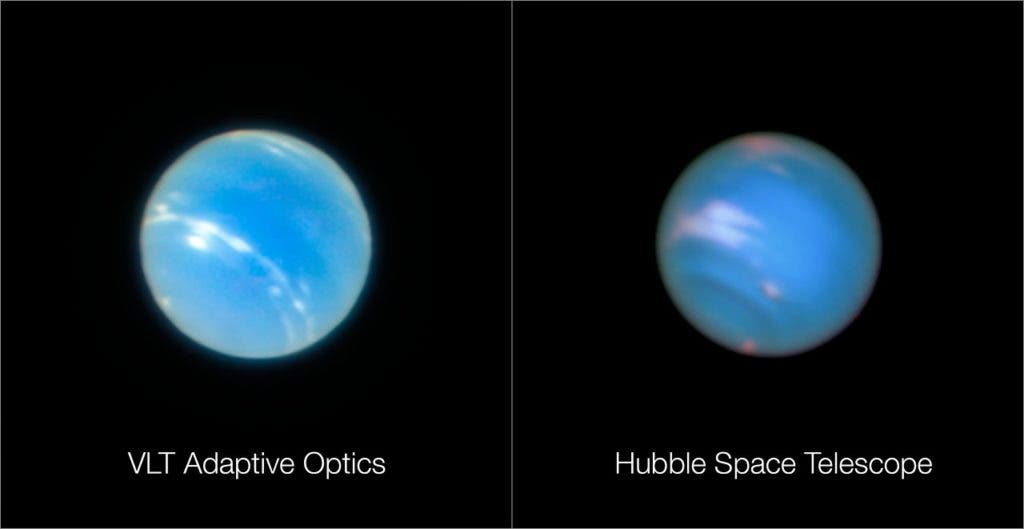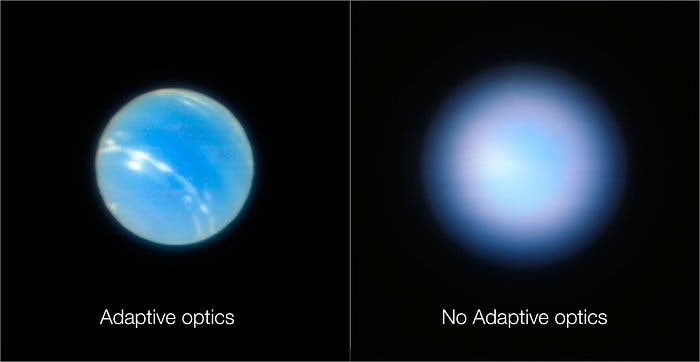One new image from the European Southern Observatory’s Very Large Telescope (ESO’s VLT) shows just how far our star-gazing ability has come.
The image was snapped using a new adaptive optics mode called laser tomography — a technique which has shown promise in astronomy as well as in medical research. The technology was made possible by the Multi Unit Spectroscopic Explorer (MUSE), which works with an adaptive optics unit and can correct for the effects of atmospheric turbulence up to one kilometer above the telescope. Using laser tomography, MUSE is able to compensate for almost all of the atmospheric turbulence (which bends incoming light and so distorts images) above the telescope to create much sharper pictures — with the caveat that it does so over a smaller region of the sky than comparable telescopes.
With this approach, astronomers were able to bypass the biggest downside of Earth-based imaging — dealing with the atmospheric disturbances and noise. This is the main reason why we send telescopes like Hubble out in space. However, if we can do that just as well (or almost as well) from Earth, it could be a game changer for future observations.

The image of Neptune on the left was obtained during the testing of the Narrow-Field adaptive optics mode of the MUSE instrument on ESO’s Very Large Telescope. The image on the right is a comparable image taken by the NASA/ESA Hubble Space Telescope. The two images were not taken at the same time so they do not show identical surface features. Image Credits: ESO/P. Weilbacher (AIP)/NASA, ESA, and M.H. Wong and J. Tollefson (UC Berkeley).
Compared to pictures taken from the same telescope without the adaptive optics technique, the difference is even more striking:

These images of the planet Neptune were obtained during the testing of the Narrow-Field adaptive optics mode. The image on the right is without the adaptive optics system in operation and the one on the left after the adaptive optics are switched on. Image Credits: ESO/P. Weilbacher (AIP).
The combination of exquisite image sharpness and the spectroscopic capabilities of MUSE will enable astronomers to study the properties of astronomical objects in much greater detail than they ever could before. Of course, having sharp images of objects allows you to study them in better detail, and gives astronomers a better chance to understand what they look like and how they were formed.
“It will enable astronomers to study in unprecedented detail fascinating objects such as supermassive black holes at the centers of distant galaxies, jets from young stars, globular clusters, supernovae, planets and their satellites in the solar system and much more,” says the ESO.
The ESO will continuously update with more photos as their instruments capture better and better resolution images. We can only imagine what these next images will look like, but for now, color me impressed.










